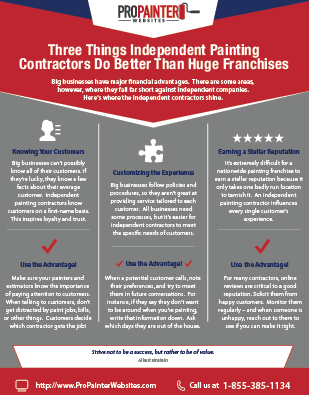Recognizing Seasonal Influences On Commercial Exterior Paint: Crucial Knowledge For Success
Recognizing Seasonal Influences On Commercial Exterior Paint: Crucial Knowledge For Success
Blog Article
Post Writer-Fox Chaney
When you're intending an industrial exterior painting project, seasonal elements can make or damage your outcomes. You'll intend to think about just how temperature and humidity impact paint application and drying out times. Selecting the appropriate period can guarantee your paint sticks properly and lasts much longer. However which periods are really the most effective for this sort of work? Let's discover the key elements that can impact your task's success.
The Influence of Temperature on Paint Application
When you're intending an industrial external painting job, the temperature level can dramatically affect exactly how well the paint sticks and dries.
Ideally, you intend to repaint when temperature levels vary between 50 ° F and 85 ° F. If it's too chilly, the paint may not treat appropriately, resulting in problems like peeling or breaking.
On the other side, if it's as well hot, the paint can dry too promptly, avoiding correct bond and leading to an unequal finish.
You must additionally consider the time of day; early morning or late afternoon supplies cooler temperature levels, which can be much more favorable.
Constantly inspect the maker's recommendations for the particular paint you're utilizing, as they typically supply guidance on the suitable temperature variety for optimal results.
Humidity and Its Effect on Drying Times
Temperature isn't the only environmental variable that influences your commercial outside paint task; humidity plays a significant role too. High moisture degrees can decrease drying times drastically, influencing the total quality of your paint job.
When the air is saturated with moisture, the paint takes longer to cure, which can bring about problems like inadequate bond and a higher danger of mildew development. If https://interior-painter-near-me10998.blogitright.com/34486331/searching-for-the-ideal-house-painters-discover-the-tricks-to-achieving-a-stunning-home-transformation-and-raising-your-residential-property-worth-by-up-to-7 on an especially humid day, be gotten ready for extended delay times between coats.
It's vital to check neighborhood weather conditions and plan appropriately. Ideally, go for humidity degrees between 40% and 70% for optimum drying out.
Maintaining commercial painters consider mind ensures your project stays on track and provides a lasting finish.
Best Seasons for Commercial Outside Paint Projects
What's the best time of year for your industrial outside painting jobs?
Springtime and early autumn are usually your best options. During these seasons, temperature levels are mild, and moisture degrees are typically lower, developing suitable problems for paint application and drying.
Avoid summer season's intense heat, which can create paint to completely dry also rapidly, bring about inadequate adhesion and coating. Similarly, winter season's chilly temperature levels can hinder correct drying and curing, risking the longevity of your paint work.
Go for days with temperature levels in between 50 ° F and 85 ° F for optimal outcomes. Remember to inspect the local weather prediction for rain, as wet conditions can ruin your task.
Planning around these elements ensures your painting job runs efficiently and lasts longer.
Verdict
Finally, preparing your commercial exterior paint jobs around seasonal factors to consider can make a considerable distinction in the outcome. By scheduling job during the suitable temperatures and humidity degrees, you'll guarantee far better attachment and drying times. Remember to keep an eye on regional weather report and choose the right time of year-- springtime and early fall are your best bets. Taking these steps will certainly assist you accomplish a long lasting and specialist coating that lasts.
